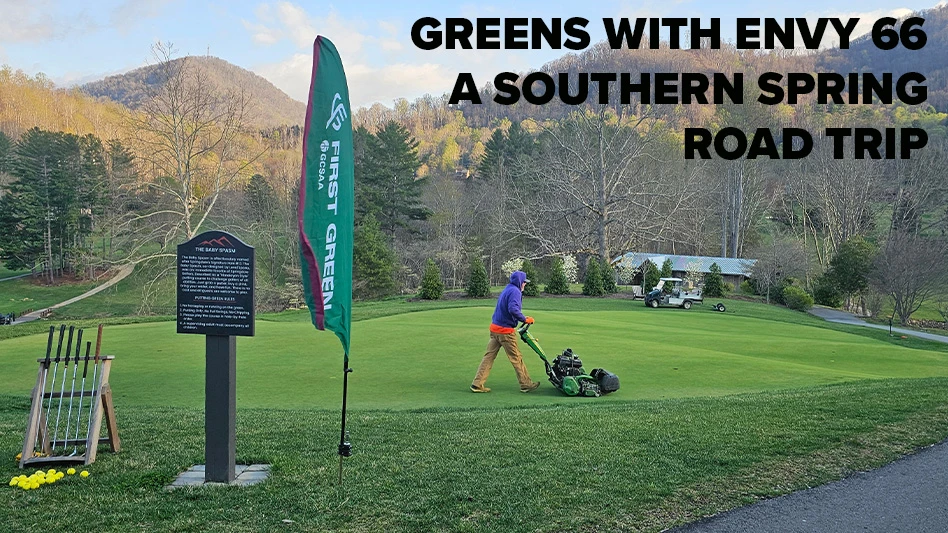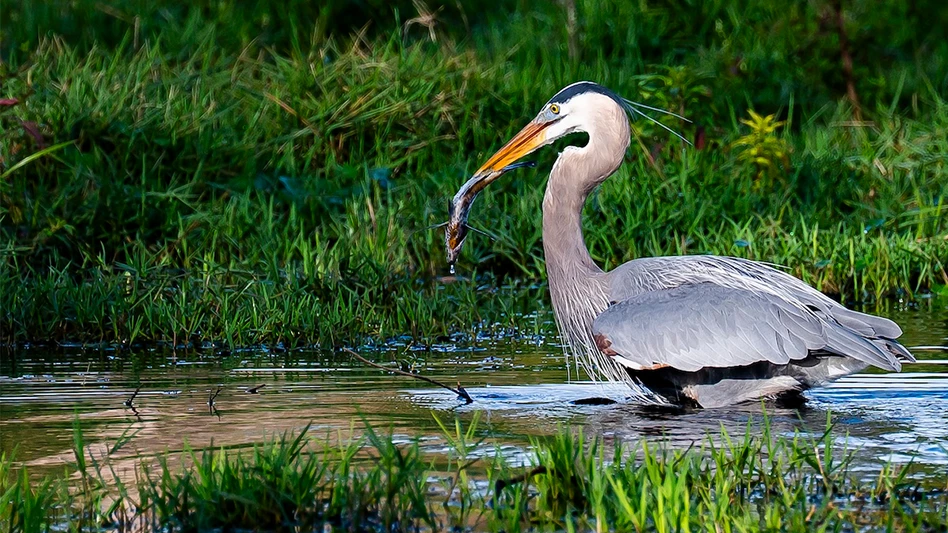
Even when superintendents have dealt with and seemingly eradicated weeds – at least to tolerable levels – they can’t quite understand why they keep returning year after year. Weeds are like that unwanted guest who finally takes the hint and leaves, only to show up again the next spring ready to settle in for another long visit. — or if you don’t do something about it, they try to move in permanently.
Accepting why weeds return is a challenge for many superintendents. It seems almost unfair that efforts from the previous season are seemingly for naught.
One of the startling new trends in the world of weeds on golf courses is the intensity levels being experienced across the country, as well as the movement of some weeds from one region to another. Some weeds are becoming a problem in areas they never were in the past.
We talked with experts from both cool-weather turfgrass and warm-weather turfgrass regions of the country, trying to get a better understanding of the weed picture as we head into the heat of the 2019 summer.
Warm-weather turf
Dr. Jim Brosnan is an associate professor in the Plant Sciences Department at the University of Tennessee, as well as the leader of the school’s Weed Diagnostics Center. He has noticed a definite increase in warm-season perennial weeds in the last few years.
“One weed that has just exploded recently is doveweed,” he says. “If you ask any superintendent Tennessee south, that’s become one of their big summer challenge weeds for sure.
“And then there is the kyllinga species,” he adds. “Whether it’s green kyllinga in the south, or false green kyllinga in the north, that’s a perennial species that’s become a widespread problem in terms of turfgrass over the past several years. The kyllingas used to be confined to the Transition Zone, but it’s really become a widespread problem for superintendents in other regions of the country as well.”
Dr. Bert McCarty, a professor of turfgrass science at Clemson University and a Certified Professional Agronomist, agrees with Brosnan about the increase in the kyllingas, but also sees problems occurring at very high rates with other weeds.
“Poa annua problems continue to grow (spread) due to its ability to adapt and develop resistance to most herbicide modes-of-action,” he says. “And a similar trend is starting to occur with goosegrass.”
McCarty blames a lot of the problems on an increase in the resistance of those weeds.

“Many believe weed resistance is the number one potential agronomic issue this industry faces,” McCarty says. “Clemson and 12 other additional universities have secured a federal grant to look into herbicide resistance in Poa annua, including its distribution, genetic/biochemistry, competition, and how the industry is addressing this. And other increasing herbicide resistant weeds, including nutsedge and spurge, Virginia buttonweed, dallisgrass, tropical signalgrass and many others continue to plague the industry.”
Brosnan also believes resistance is a developing problem, and he agrees with McCarty that it’s not just an issue with Poa annua, but he is seeing it with the sedges as well in particular.
“My counterpart at Georgia, Dr. Patrick McCullough, he’s been working on resistance in sedge,” Brosnan says. “Most of our conversations in the past about resistance have centered on annual bluegrass, but Patrick has done a lot of good work showing resistance in sedge species — particularly purple nutsedge in the deeper south and yellow nutsedge as you move into more northern geography.”
Brosnan and McCarty agree that the wetter winter/early spring weather much of the country has been experiencing in recent years is contributing to the high weed levels superintendents are dealing with.
“Goosegrass, torpedograss, nutsedges and clover all tend to explode with the wet weather,” McCarty says. “What we have seen so far in 2019, with an extremely wet winter and spring, is shortened efficacy of certain preemergence herbicides. Thus, these weeds are more problematic much earlier in the year than they would be after a drier, more normal winter/spring.”

Chris Sykes, superintendent at Toqua Golf Club in Tellico Village, Tenn., agrees with Brosnan and McCarty that the extremely wet weather in late winter is making weed control a more difficult issue than ever before.
“We had 13 inches of rain in February,” Sykes says. “In addition to seeing more Poa than normal, much higher levels of goose grass and more crabgrass are prevalent as well. It’s funny, but for years I didn’t worry too much about weed pressure. I was more focused on putting surfaces and disease pressure. But now we’re really having to direct a lot of our attention to weeds.”

Cool-weather turf
The trends in the cooler-weather turf areas seem to be mirroring those weed trends of the warmer-weather turf areas. If anything, we’re seeing the traditional demarcation lines blurred and even disappearing as the climate seemingly changes before our very eyes.
Dr. Jared Hoyle, an associate professor and extension turfgrass specialist at Kansas State University, is seeing significant weed pressure. “Definitely more yellow nutsedge out there because of the wet conditions,” he says. “As well as more crabgrass.”

Trampis Nickle is a superintendent in Hoyle’s region of Kansas, at Wamego Country Club, less than 20 miles east of Kansas State’s main campus in Manhattan, and he agrees that wet springs are wreaking havoc on golf courses.
“We got 18 inches of rain in about 35 days, late April into the first part of June,” Nickle says. “Because of the rain, we’re seeing huge outbreaks of yellow nutsedge in areas that traditionally we’d only see them in irrigated areas. Normally we spot spray our weeds post-emergent, but this year we had to do a blanket app. Weeds are definitely more of a problem with the unusual weather patterns.”

Dr. David Gardner is a professor at The Ohio State University in the Department of Horticulture and Crop Science, and he’s noticing a lot of interesting new trends in weed development in the cool season areas of the country.
“Recently in Ohio we have been introduced to the paspalums,” he says. “This is a tropical grass that is perennial. This is entirely unique amongst our weeds in this part of the country. Also, different sedges and kyllingas that were once only a problem in the south. Big increases in veronica and hairy bittercress as well, which are both winter annuals.
“Really noticing that winter annuals are becoming a problem because of our warmer autumns, which makes for better growing conditions for these weeds. Warmer and wetter periods going into winter seems to be increasing the annual grasses.”
Hoyle is noticing summer rains can present problems as well.
“Last year was really hot and dry here in the Midwest,” he says, “and then it got wet all of a sudden, and then the weeds just start popping really quickly with that water and those compacted conditions that led into it. Especially in non-irrigated areas.”
Tips going forward
As mentioned, the lines between warm-weather and cool-weather turf seem to be fading rather quickly. Superintendents need to be prepared to battle weeds — as well as environmental conditions — that they might not have faced in the past. What everyone seems to agree on is the rapidly changing blending of those traditional north vs. south weeds.
Hoyle thinks the best bet might be to try and keep it as simple as you can, while still educating yourself on the new problems you might have to deal with.
“Always step one is having healthy turf,” he says. “It seems simple, but it really is the most important step. Do right by the turf first. Anything you can do to keep out these opportunistic type of weeds. With preemergent herbicides, really keep on top of your growing degree days to get the most out of those initial apps. And if those growing degree days get you out earlier in the year, then look at switching it up from the past and maybe hitting them again with a second app — not adding herbicide but splitting it up into multiple applications.”
With higher levels of weeds, and weeds moving from their traditional regions into new areas, Gardner suggests reeducating yourself on your weeds. “Know your weeds and know your control options,” he says. “For example, applying a broadleaf herbicide in April is going to not only miss the summer annuals, but it is also going to miss things like white clover.”
McCarty stresses that everyone should be aware of resistance. “Remember to rotate modes-of-action,” he says. “This is the best way to reduce chances of herbicide resistance.”
Although the future of weeds and weed control looks a bit daunting, it’s good to know so many experts are on top of the issue and offering scientific solutions and advice to help superintendents chart these new weedy waters.

Explore the July 2019 Issue
Check out more from this issue and find your next story to read.
Latest from Golf Course Industry
- From the publisher’s pen: Technology diffusion and turf
- Applications open for 2025 Syngenta Business Institute
- Smart Greens Episode 1: Welcome to the digital agronomy era
- PBI-Gordon promotes Jeff Marvin
- USGA investing $1 million into Western Pennsylvania public golf
- KemperSports taps new strategy EVP
- Audubon International marks Earth Day in growth mode
- Editor’s notebook: Do your part






